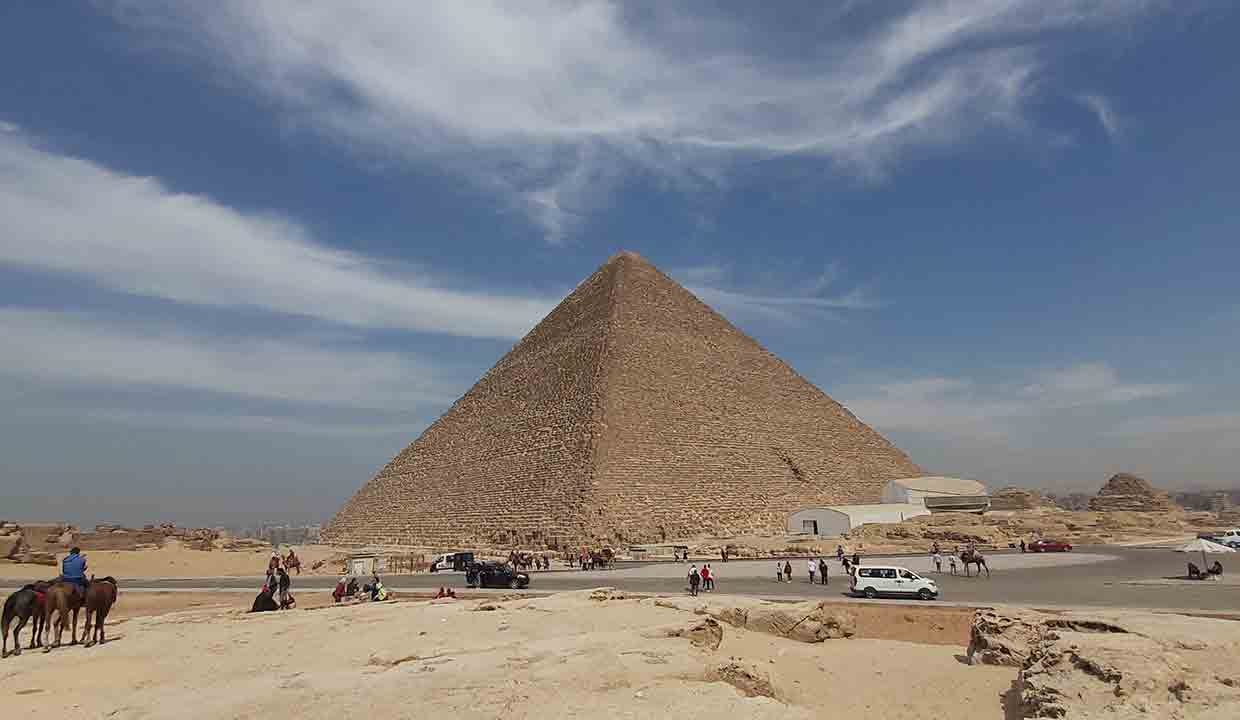Giza Plateau invites: Unearth stories set in stone, from pyramid pinnacles to the Sphinx’s age-old secrets.
The Giza Plateau, set against the desert backdrop of Giza, Egypt, is home to some of the most iconic and recognizable structures in the world. Known primarily for its pyramid complex, this plateau also holds a treasure trove of ancient secrets, from the massive Sphinx to hidden tombs, bustling worker villages, and intriguing industrial zones. But what makes this site a lasting testament to ancient Egyptian culture, ingenuity, and their understanding of eternity?
-
Limestone’s Role
Before delving into the structures themselves, it’s crucial to understand the geography. The Giza Plateau is essentially a massive chunk of limestone, a sedimentary rock largely composed of skeletal fragments of marine organisms. It’s this natural resource that the ancient Egyptians used, not only to erect the pyramids but also to chisel out many of the intricate statues, stelae, and burial sites.
-
The Pyramid Complex: Monuments to Eternity
The Fourth Dynasty of ancient Egypt’s Old Kingdom left the world with an architectural wonder that has endured over 4500 years. The three primary pyramids here were built for Pharaohs Khufu (Cheops), Khafre (Chephren), and Menkaure.
- Pyramid of Khufu (The Great Pyramid): The largest of the three, this pyramid originally stood at 146.6 meters, but today it’s slightly shorter due to the loss of the outer casing stones. It consists of over 2.3 million blocks of stone, each weighing, on average, 2.5 tons.
- Pyramid of Khafre: Notably recognized with its slightly steeper angle, this pyramid is unique because it still retains some of its original smooth Tura limestone casing at the top. In front of this pyramid sits the enigmatic Great Sphinx, which many believe bears the likeness of Khafre himself.
- Pyramid of Menkaure: The smallest of the three main pyramids, it’s known for its unique casing of red granite at the base, contrasting with the typical Tura limestone.
-
The Great Sphinx: The Silent Guardian
The Great Sphinx, with the body of a lion and the head of a pharaoh (believed to be Khafre), sits facing east, capturing the rising sun. Carved directly from bedrock, the Sphinx has faced intense erosion, attempted restorations, and centuries of mystery regarding its purpose and the secrets it might hold.
-
Cemeteries: Tombs of Royalty and Nobility
Surrounding the pyramids are vast cemeteries where the royal family, high officials, priests, and other dignitaries were buried. The mastabas (rectangular burial structures) are scattered around, revealing intricate hieroglyphs, carvings, and sometimes stunning artwork that provides a deep insight into the life, religion, and values of the Old Kingdom Egyptians.
-
Workers’ Village and Industrial Complex
Contrary to older beliefs about the pyramids being built by slaves, evidence from a workers’ village near the pyramids suggests otherwise. This settlement, discovered in the 1990s, reveals insights into the lives of the people who built these structures. They were organized, fed, and treated with respect.
Adjacent to the workers’ village, an industrial complex was discovered, complete with workshops, tools, and storage facilities. This zone stands as evidence of a bustling economic hub, where artisans, laborers, and merchants collaborated to serve the grand projects of the pharaohs.
Conclusion
The Giza Plateau, more than just being a tourist attraction, is a monumental testament to humanity’s eternal quest to touch the divine, defy time, and celebrate life after death. From the colossal pyramids that pierce the desert sky to the workers’ village that tells tales of a dedicated workforce, Giza continues to unravel its mysteries and hold the world in awe.
